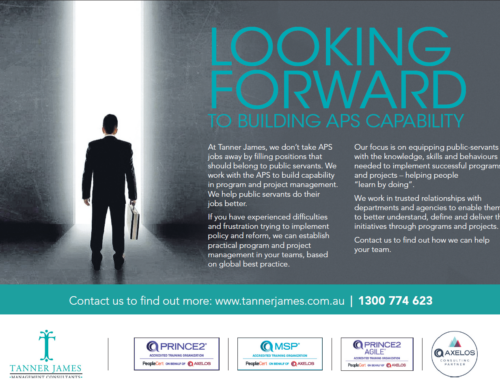- Are you doing the right things at the right time?
- Could you be doing things better?
- Is your initiative on-track and meeting expectations?
- Where should you focus effort when time is short?
These are common questions for even the most experienced manager. However, they are hard to answer objectively when you’re in the thick of delivery.
So how can you be sure that your project or program is shaping-up the way it needs to?
Here are a few tips:
STEP 1: Know what you’re stacking-up against
This will vary considerably – every initiative is unique and its approach will need to be tailored accordingly (to your organisation; to your subject matter; to the people and their personalities, risk appetite and ability).
In general terms, you may need to consider:
- Internal standards and policies (including project/program management frameworks or manuals)
- Overarching approaches such as PRINCE2 or Managing Successful Programmes (MSP)
- Other previous or current initiatives whether they be internal or external to your organisation
- Whole of government or industry standards
- Laws, Codes, Treaties, Agreements, etc.
These will collectively contain principles, concepts, themes and processes that can be contrasted with actual performance to assess your initiative’s performance.
It’s important to recognise that there will often be overlap among the above-mentioned items – a Matrix approach is a good technique for grouping like with like.
STEP 2: Collect some evidence
Sources should be varied and may include:
- Documents such as business cases, plans and procedures. Noting that the absence of key documents can be just as telling as their presence.
- Interviews, discussion and workshops can be useful ways of eliciting information – this is particular useful for understanding what practices look like and is often very different to what may have been documented.
- Emails, Registers, Reports and Meeting minutes are all useful to consider.
STEP 3: Impartially assess what you find
This requires skill, experience and good judgement. Some of the most common problem areas to look out for include:
- Governance – lack of role clarity and accountability.
- Direction – insufficient vision, lack of alignment with broader organisational objectives, the absence of measurable benefits.
- Planning – unstructured, inadequate, or inconsistent guidance. There should be sufficient detail (product-based planning) and prioritisation to empower and enable smooth progress.
- Monitoring – inaccurate, dishonest or lacking follow through. There should also be evidence that parameters such as scope, time, cost, risk, quality and benefits are all being regularly reviewed and acted upon.
STEP 4: Prioritise the findings
A risk-based approach to prioritisation is useful. This needs to be done collaboratively, ensuring that it’s not skewed towards one particular perspective. It’s also important to recognise that priorities are a matter of timing – how far advanced the initiative is will have a bearing on which findings to address first.
STEP 5: Take action
Having identified areas for improvement, it’s very important to take decisive action. This doesn’t need to be done aggressively, its critical that any adjustments are accompanied by good communication. Ultimately, it comes down to building capability and maturity. This often takes the form of education/training, awareness/enforcement, gap filling and clarification.
Tanner James can help you through the above steps – give us a call today.






Leave A Comment